When Rockstar Games Invaded the Schoolyard
What made "Bully" such an entertaining experience?
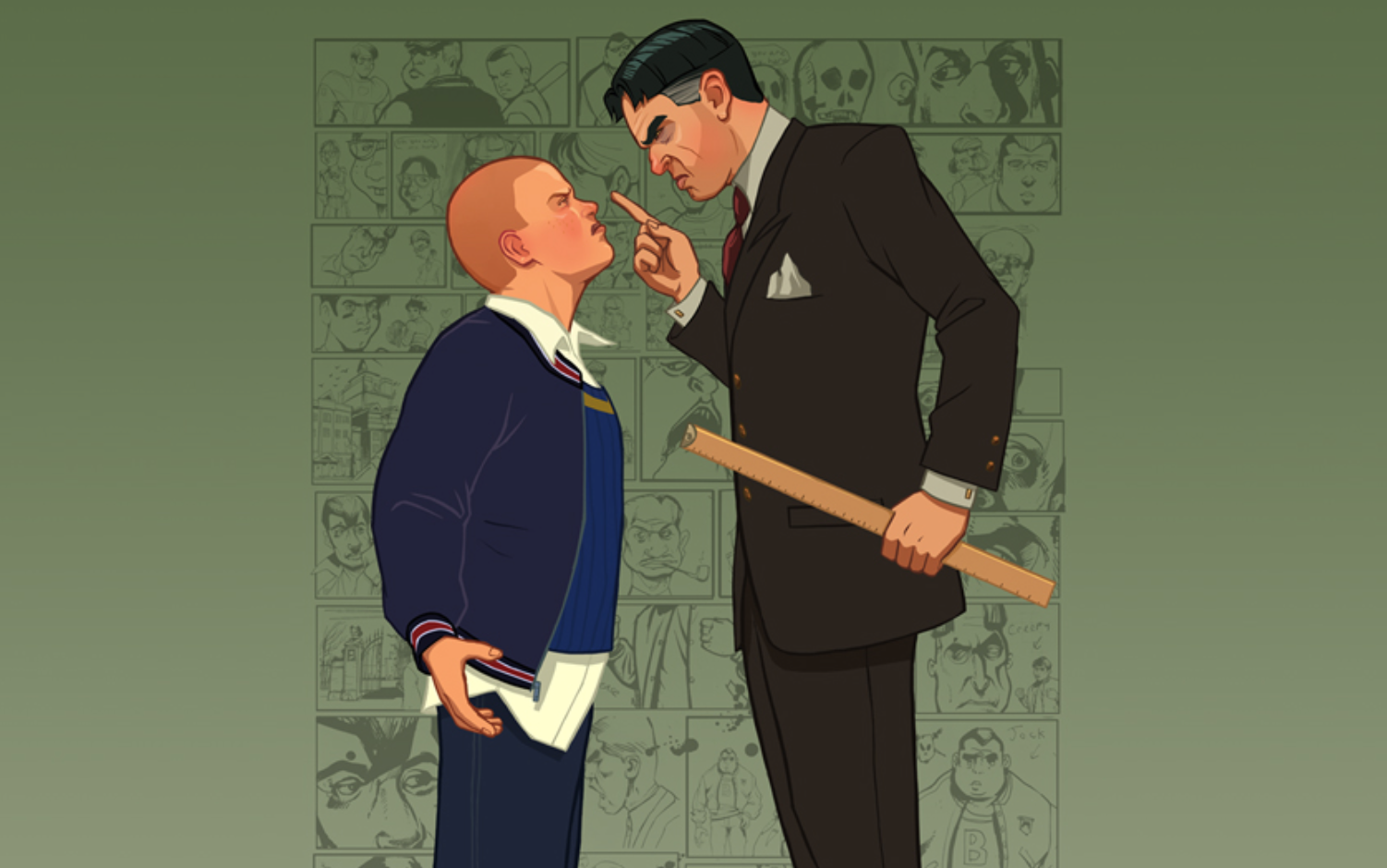
What comes to mind when you think about developer Rockstar Games? Bank heists? Car chases? Shootouts? Joyriding? What about wedgies, chemistry classes, slingshots and stink bombs?
Bully (Canis Canem Edit as it was known in the PAL region) was a whole new IP for the controversial developer, with a central theme that set it apart from their most famous franchise. Developed by Rockstar Vancouver and released in 2006 on the PS2, it followed a disobedient student named Jimmy Hopkins. After being expelled from seemingly every other school in America, he finds himself dumped by his mother and new stepdad at Bullworth Academy — an establishment that is widely known to be the worst and toughest school in the country.
As the new kid, you’ll have to overcome the bullies and take on the three main villainous cliques within the school walls. Those are the posh rich kid Preppies; the leather jacket, quiff wearing Greasers who are still stuck in the 50s; and the tough, sporty Jocks who rule the school. With a little help from the Nerds, Jimmy attempts to defeat the leader of each group and take revenge on Gary, a fellow student who betrays him early on and who seeks to rule the school.
The simple fact that there was a Rockstar logo on the front cover was enough for the game to come under fire instantly (particularly in the wake of the Hot Coffee controversy). Despite the protagonist’s actions within Bully being nothing worse than mischievous, attorney Jack Thompson declared it to be a “Columbine simulator” before the game had even been released. In addition, an anti-violence group named The Peaceaholics protested at the offices of Rockstar with a frankly ludicrous set of demands, including that the game should not be released under any circumstances.
Source: YouTube.
For those who did actually play it, Bully was far from Grand Theft Auto: School Edition like many media outlets believed. While it shared many of the same characteristics of its sprawling crime counterpart (an open world sandbox, mayhem, satire and distracting side missions), Bully was a far more charming, T-Rated affair which actually pitted the player against the bullies who ruled Bullworth Academy. While there is indeed violence and bad behaviour, it’s never gratuitous, but instead slapstick enough to be put on par with a teen movie or cartoon.
IGN noted in their review of Bully: Scholarship Edition (the remastered and expanded re-release of the game) that the original was largely ignored due to its timing. Coming out after the next generation of gaming had started, it’s likely that many had already started the process of trading in their PS2’s, or were simply put off by the unconventional setting and by then, outdated graphics. Despite being developed by an industry giant, Bully doesn’t even rank in the top 100 selling PS2 games of all time, a far cry from GTA: San Andreas which comfortably holds the top spot. These days, you’re far less likely to find someone who has played Bully than you would San Andreas, which is a shame indeed as it deserves to be spoken of in the same vein as the PS2's best selling game.
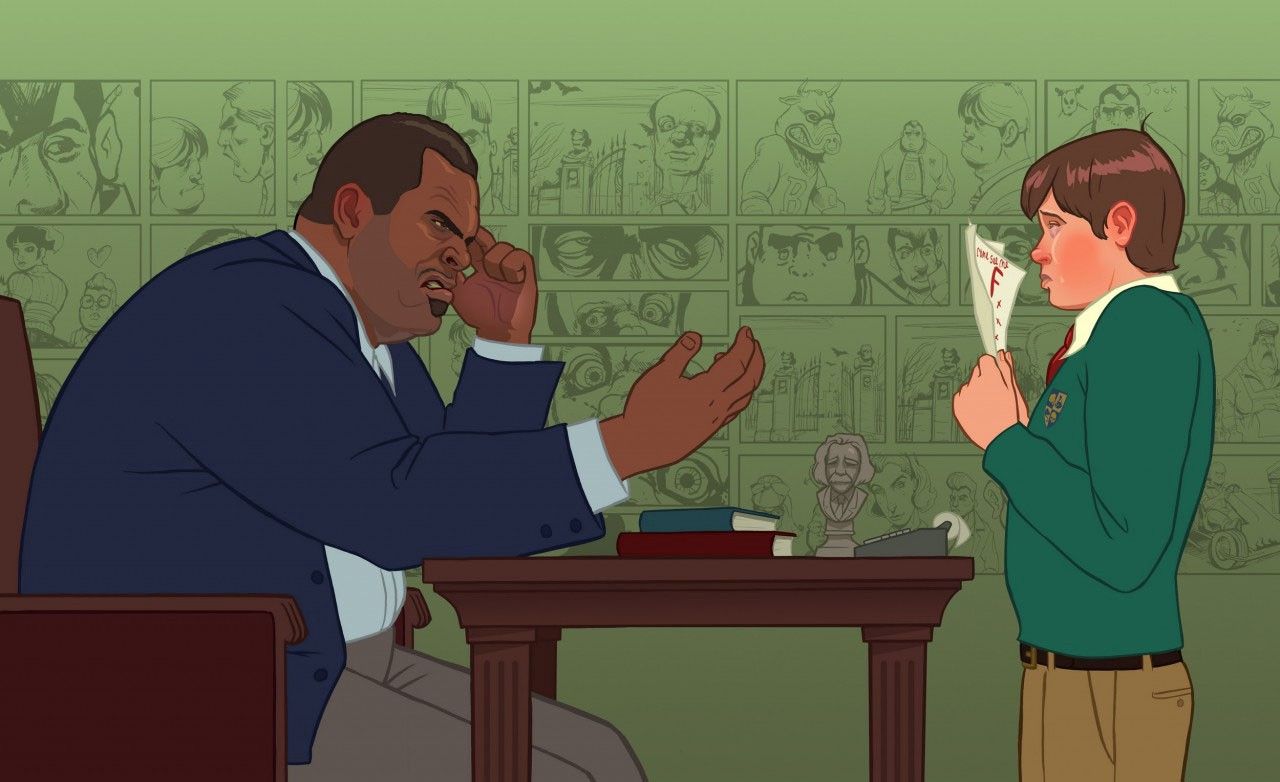
While Michael De Santa’s problems in GTA V include attempting to raise $2,500,000 in order to pay off a vengeful Mexican drug lord, the problems that the characters in Bully have to face are far more, let's say, modest and relatable. Your aim as you complete the main story of Bully is to stand up to the ruthless bullies within the different cliques, as well as the various corrupt teachers who have no intention of putting a stop to the harm being inflicted upon the innocent students.
What the aforementioned moral critics of the game failed to realise is that your aim in Bully is to take over the school for good. As Jimmy puts it himself, he only gives people what they have coming to them. Despite being described by the other characters as a “little rough around the edges”, Jimmy is still probably Rockstar’s most consistently altruistic protagonist (although that’s not saying much). You have the option to be a bully and pick on those who don’t deserve it, but this is discouraged by the urge you’ll get to role play as the school vigilante, with nudges from the game’s narrative toward that path. When walking around Bullworth you’ll routinely witness Jocks and Bullies picking on the Nerds, where you’ll be presented with the option to intervene either with force or with some choice words (pass enough English classes and you’ll be able to dish out better apologies and insults).
“I never saw Jimmy as being that level of degenerate…I saw him as a bad teen, because he comes from a tough home, who could go either direction. He’s not going to be a carjacker. He was an unpleasant soul, but he had a heart. Jimmy’s not trying to burn down the school, he’s more trying to stand up to injustice.”
Dan Houser
Concessions have been made for the fact that you’re a teenager as opposed to a crime kingpin, but you rarely feel like you’re being held back from any fun content in the game. As a young teenager, you obviously can’t drive a car around the town. Instead, your skateboard will be your trusty, constant companion, while bikes and even mopeds can be unlocked later in the game. Weapons are restricted to items you would typically find on the school playground, including slingshots and firecrackers as well as items like stink bombs, marbles, and itching powder. These don’t so much hurt your victim as they do annoy them or temporarily halt them in their pursuit of you. You also have to be in bed at a certain time if you don’t want to fall asleep in a heap on the floor or get busted for breaking curfew — a structure which may sound restricting but gradually starts to feel perfectly routine the more you play.
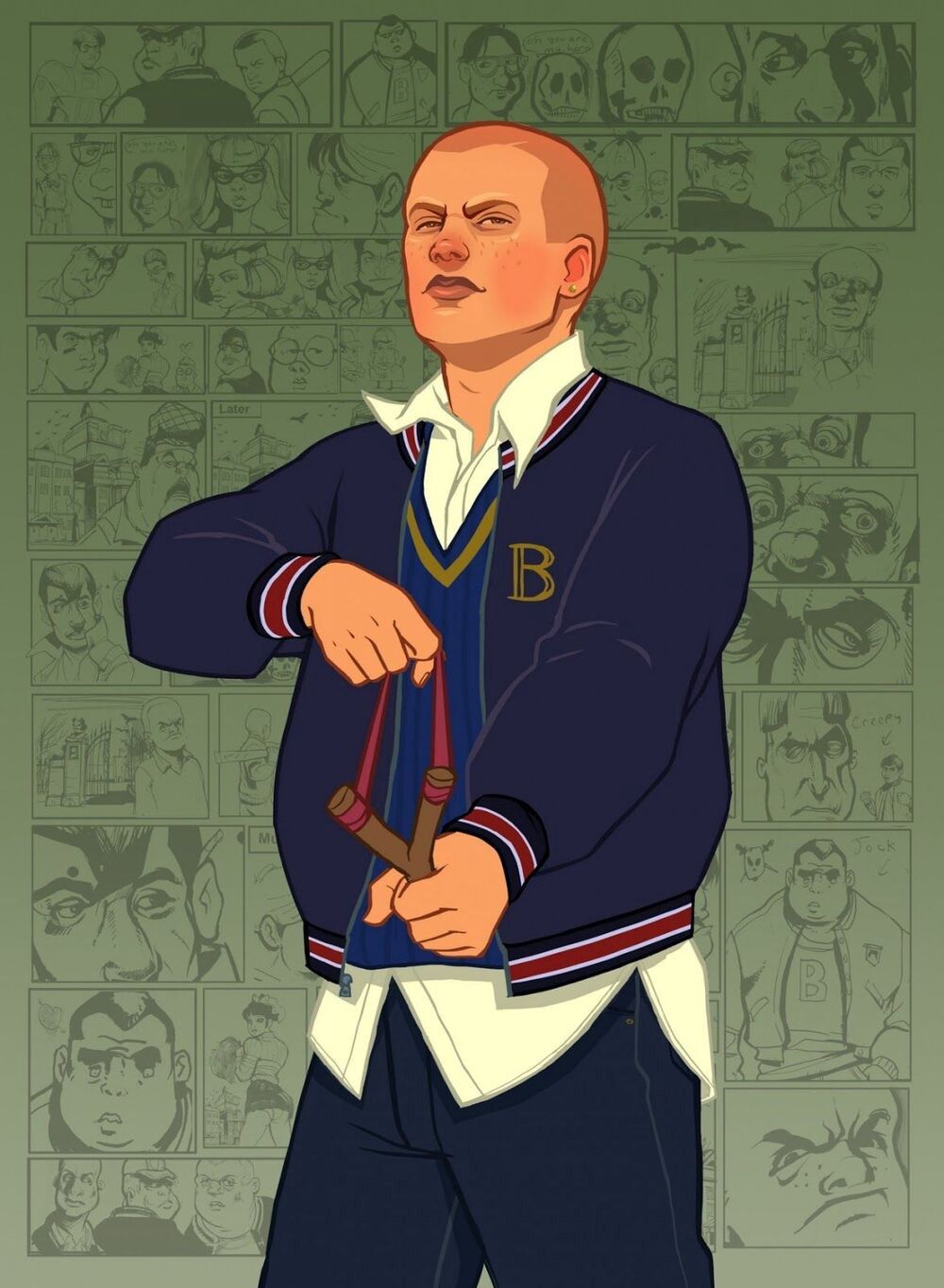
Bully also builds upon the ‘respect’ feature that was started by GTA: San Andreas. As you complete missions, your respect amongst the different school factions will rise and fall appropriately. If you stand by with a slingshot to protect your geeky friend Ernest as he’s giving his class president speech, you’ll raise your standing amongst the Nerds while losing it amongst the Jocks, who all receive a slingshot hit to the head from Jimmy as they attempt to ruin the presentation. If you go into the run-down area of town that is home to the Greaser clique in order to spray paint insulting slogans, you’ll obviously lose their respect but gain it from the spoilt Preppies, who are the sworn enemies of the Greasers. If your respect falls too low, you’ll be attacked on-site by the appropriate faction whenever you venture into their “turf” (the Nerds have the library, the Jocks have the football field, the Greasers have the auto shop and the Preppies have their own private building on campus).
This feature is a great way of adding a constant sense of consequence to a game environment where the stakes are ultimately very low when compared to the usual hero journey. The fate of the world isn’t on the line here, but you feel as though your actions always have some kind of effect on your stature within the school’s hierarchy. Furthermore, it’s a lasting feature that allows the player to gain a real sense of progression as they play through the game’s storyline; you’ll go from being attacked and ridiculed by everyone to gaining gradual admiration from each student. This sense of progression extends to even the smallest of features, such as room trophies. These are simply props that will decorate your dormitory and are a nice, nostalgic addition (who didn’t cover their walls in posters when they were a teenager?)
As for the main missions, they’re a blast. Diverse and often very quirky, they never outstay their welcome and are accompanied at all times by funny, witty writing and memorable characters (whether student or teacher…. or school cook). The game is split up into chapters, with each one focusing on a different school faction of increasing difficulty. Admittedly they do very often boil down to simple fetch quests or “go here, fight this person” type missions, but the school setting goes a long way to hiding the sometimes generic setup of the tasks.
The game’s story does a fantastic job of keeping your interest despite the fact that the narrative is so modest and low-key — you’re not stopping a nuke from destroying America, you’re getting a girl’s diary back from the school bitch who stole it or winning a teddy bear on a carnival date. One particular early mission has you escorting Algernon, the geeky, overweight student with a weak bladder to his locker so that he may grab his library books — no, seriously. This may sound dull as dishwater, as it’s not exactly on par with the scope of the Union Depository heist in GTA V, but part of the charm of Bully is the idea that at one point in our lives, something as trivial as returning a library book on time or getting the best bike was the biggest worry on our minds.
It is this relatability that you don’t often find in video games starring beefed-up soldiers, which makes Bully such a charming and unique experience. Perhaps the highlight of the game’s story is the long-awaited revenge on the Jock clique; you’ll apply glue to the team bench, trip up the football team by scattering marbles over the field and… well let’s just say you’ll change the wording on the scoreboard to something they won’t appreciate.
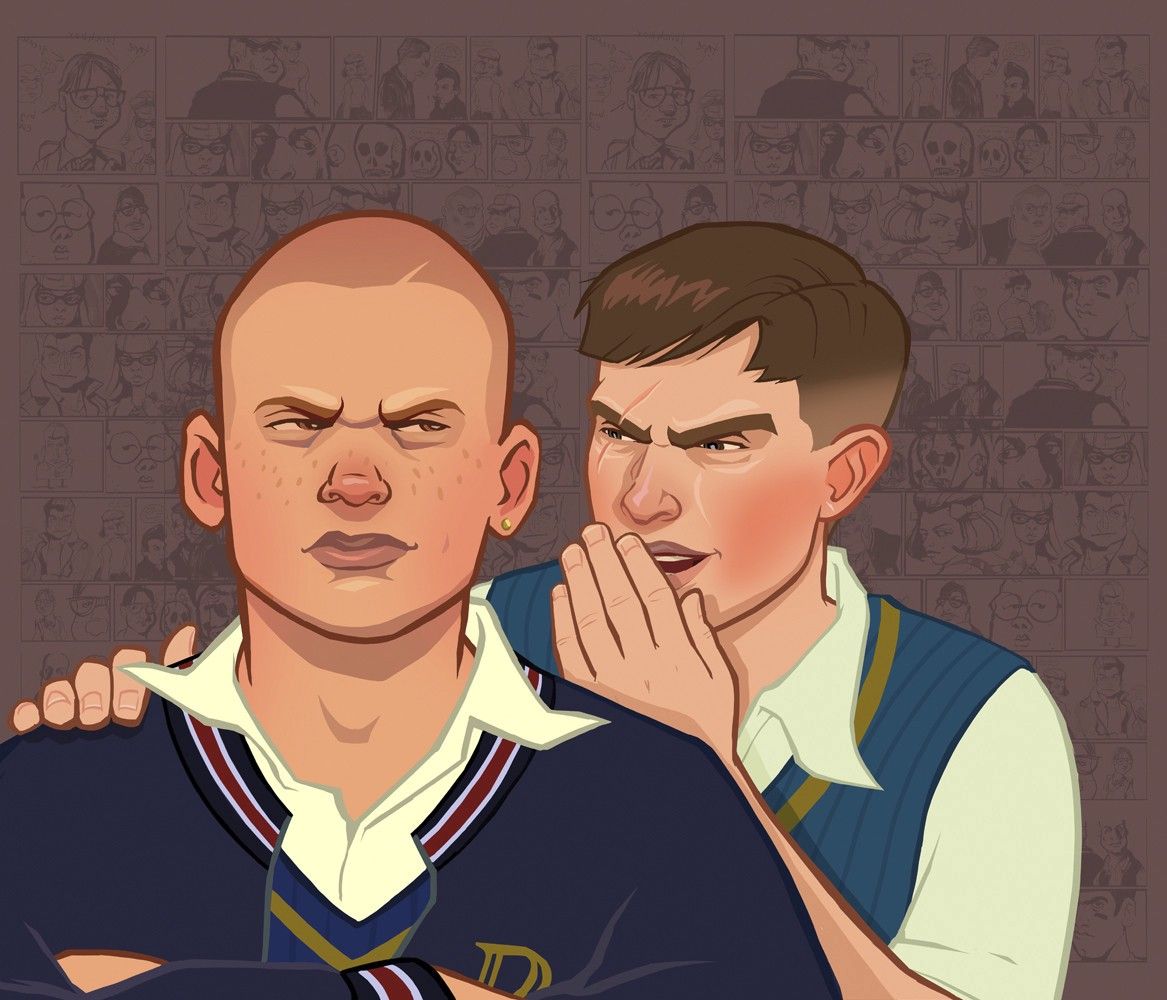
Such a great effort has been made to make the world feel alive despite the limitations of the PS2 system. For one thing, you can get a real sense of the personality traits of each individual student and teacher simply by walking around the grounds and listening to their unique quips. These are by no means deep or thoroughly developed traits (and after a few hours of play you’ll notice the same lines being repeated), but they do help to flesh out the environment and the people within it. You can gather in an instant that the young boy by the name of Sheldon is an utter brown-noser, convinced that he is loved by every teacher in the school, while receptionist Miss Danvers seems to be devoted to a frankly maniacal extent to her boss and headteacher Dr. Crabblesnitch.
Replaying certain Rockstar games, it’s interesting to see how their game mechanics have evolved and developed over time. For instance, it seems that San Andreas and to a greater extent Bully established the groundwork for the interaction and conversation feature that Red Dead Redemption 2 would utilise greatly. While walking around the world, you can speak positively or negatively to the NPC’s — these quick, casual interactions go a long way to making you feel immersed in the environment since every character has their own individual script. The dialogue itself isn’t dissimilar to the way that real teenagers interact in the school corridors and the mechanic can lead to some dynamic gameplay situations. Insult a teacher’s pet for example and they may snitch and go running to the prefects, leaving you to make haste and hide in a bin or locker until they stop looking for you.
In an age where so many sandboxes seem to prioritise quantity over quality, where impressively large worlds are full of either filler content or side activities that aren’t particularly interesting, Bully offers a densely packed world to explore with many activities to partake in. Get a part-time job as a paperboy and spend your pocket money at the carnival, become the bike racing champion of Bullworth Town or bet your hard-earned cash on a game of kick-ups with the Jocks, and so on. By today’s standards, the “open world” would hardly even be considered a blip on the map of Los Santos, but it’s still jam-packed with secrets to discover and mini-games to enjoy.
The seasonal shift in the game is an unexpected but interesting touch, impacting not just the visuals but the gameplay mechanics too (albeit only slightly). Halloween evening is a highlight and allows you to run amok while the prefects are away, playing pranks, destroying pumpkins, and dressing up as a skeleton (not to mention the optional ‘Big Prank’ mission, which is definitely worth taking part in!). It was also a wonderful surprise to be riding around on a bike a few hours in to see the first bits of Christmas snow falling on the town. This change is accompanied by the NPCs all donning warmer looking clothing — with poor Jimmy himself being the butt of the joke when his mum sends him a comical-looking reindeer jumper, earning laughs at his expense from the students. As mentioned, the changes aren’t just aesthetic; you’ll notice trickier handling on your bike and skateboard — and yes, you can start snowball fights.
In-between all this, however, you’ll need to attend lessons if you don’t want to be chased down by the prefects (it’s school after all). While it may be tempting to be truant and try to skip your classes (playing this game as a high schooler, I wondered why I was getting home from school only to attend virtual English classes on my PS2), they’re always worth participating in. Despite not being particularly challenging, they never feel like a boring chore due to their brief length and (for the most part) extremely useful rewards that they yield. In the case of Shop and Chemistry, you’ll take part in quick-time events where you match button sequences to fix a bike and complete an experiment respectively. English consists of a Countdown-style mini-game where you make words out of a set of jumbled letters; Gym has you playing dodgeball or wrestling and Art class has you directing a paintbrush around the screen to reveal a painting, all while avoiding targets that are floating around (reminiscent of Pac-Man).
Photography classes on the other hand make use of the open-world sandbox, allowing you to leave the classroom and complete a checklist of photos to capture around Bullworth Town. Rockstar did a good job of making class completion rewards relevant to the subject in question, so they didn’t feel like an arbitrary token for completing a task. For example, English classes improve certain aspects of your charisma, Chemistry classes improve your weapon inventory (stink bombs, firecrackers, etc) and Wrestling classes improve your hand-to-hand fighting abilities.
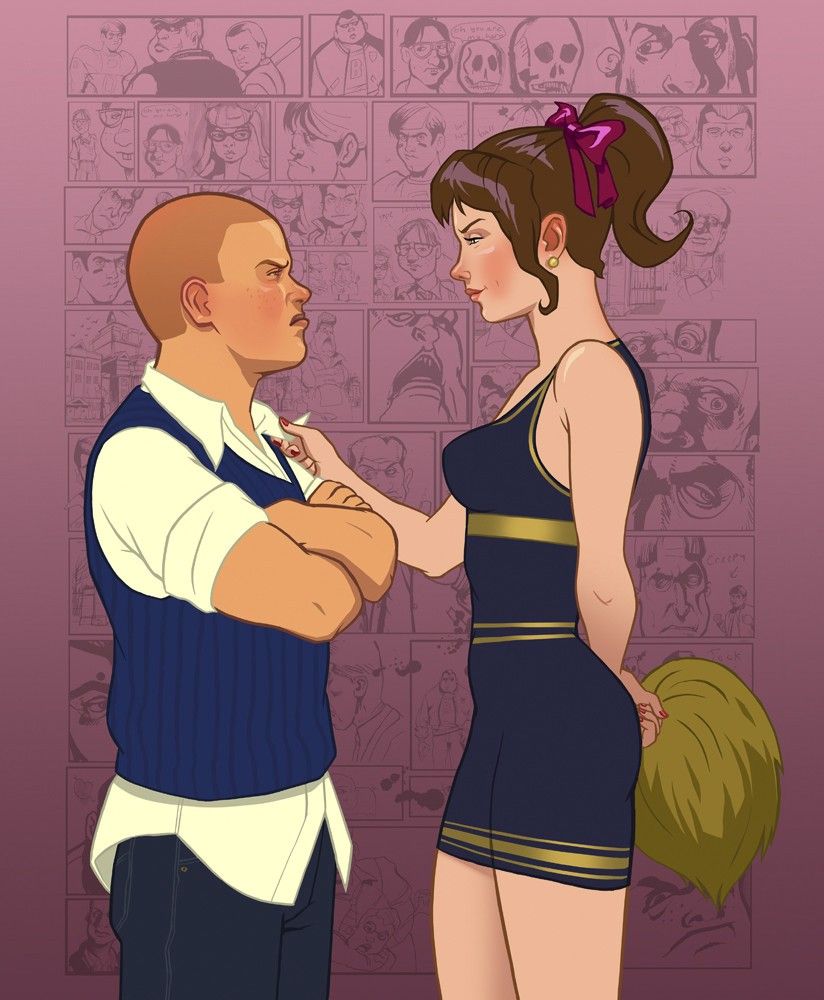
Classes were expanded upon in the aforementioned 2008 re-release of the game entitled Bully: Scholarship Edition and were a welcome addition. This was particularly the case with Biology lessons, which lent themselves well to the motion controls on the Wii console in particular. These grizzly dissection classes were very reminiscent of the Trauma Centre series of games…thankfully these operations were performed upon frogs as opposed to real patients! While the re-release was a mixed bag when it came to the additional main missions, each new class (Geography, Maths, Music, and the aforementioned Biology) expanded upon an already enjoyable roster of activities. While you can definitely see Rockstar run out of steam when it comes to thinking up ideas for worthwhile and relevant class completion rewards here (the vast majority of rewards were simply new clothing items), the exception was Geography, which fittingly revealed the locations of collectibles on the map for you.
Overall, the class timetable mechanic of Bully may be no different than your typical side quest routine found in other games. Thankfully it has been crafted in such a way that fits perfectly with the setting, lending it a real sense of substance that could have easily been lost in the hands of another developer.
Another delight of Bully is the music by Shawn Lee. Rockstar has rightly gained a golden reputation for including an eclectic selection of licensed tracks to enjoy in the GTA series, but this has been swapped over in favour of an original score. It’s not a sweeping orchestral John Williams type arrangement, but instead a playful and light-hearted composition which is audible at almost all times of play. It’s truly difficult to imagine the game being as enjoyable as it is without this accompaniment; almost every track is catchy, funky, and memorable in its own unique way. The fact that each situation in the game seems to have its own theme song of sorts just adds to the personality of the whole experience of playing. ‘Hattrick vs. Galloway’ has an almost jazzy, Pink Panther feel to it, in keeping with the corresponding mission which has you sneaking around campus collecting incriminating bottles of Scotch belonging to the alcoholic but kindly English teacher Mr Galloway. ‘Slingshot’ has a mischievous tone to match the eponymous mission that it is heard in (you sit in a tree taking shots at the football team with your new slingshot). And the guitar riff in ‘The Tenements’ instantly reminds you of the type of 50s music that the Greaser clique would listen to (fitting considering the mission has you fighting them).
It was a struggle to pick one track, but a standout is a song that plays during the mission ‘Tagging’, a song with a baseline that will definitely remind listeners of certain Chic and Queen songs.
Source: YouTube.
Many people are calling for a sequel to be made to Bully, and it’s easy to see why. While Red Dead Redemption 2 may have overtaken Bully as a personal favourite Rockstar game, replaying it nearly 15 years later still feels like an incredibly unique experience compared to so many other games out there. The good news is that Bully isn’t hard to get hold of these days if you’ve long since sold your PS2; thanks to the PlayStation Store and Steam as well as the backwards compatibility of the Xbox One, it can be enjoyed at a reasonable price.
If you’ve ever wondered what it was like to play an interactive John Hughes teen movie, Bully has you covered — and it’s a joy to play!
